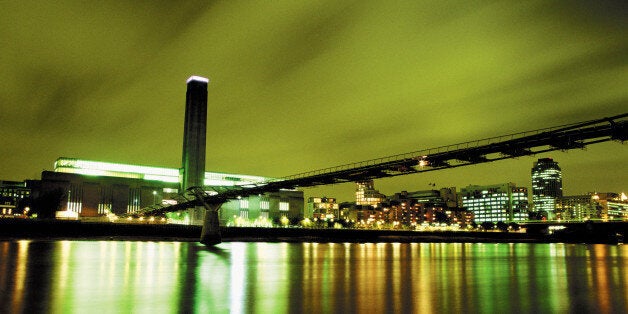
The news that the only exam board in England that still offers an A level in Art History has decided to drop the subject is a wake-up call to anyone in Britain who cares about culture. Since 1999 the number of students taking the subject has halved - from roughly 2,000 to less than 1,000 - partly because ever fewer schools teach it.
Over 36,000 undergraduates were on creative art and design courses last year, but only around 1,000 were studying art history. A disproportionate number of these were privately educated. Only 16 state schools offered art history at A Level, compared to 90 private schools. Yet our capital is home to the two most powerful auction houses in the world - Sothebys and Christies - plus the most visited museums and galleries on the planet. The international commercial art market is worth £80bn and London is its second biggest city.
Studying art history is actually one of the few ways of getting a good job in the arts sector. It's hard to be a museum curator without it, work in any senior position in an auction house or gallery, or become a serious art critic. If for no other reason than economics, the subject of art history is worth saving.
The twittersphere reaction blamed Michael Gove for his reform of the education system, but in truth, with so few state schools offering it, the subject had become economically unviable. This problem has been brewing for decades.
One of the longstanding reasons is that art education in state schools has tended to prioritise the teaching of fine art skills (encouraging children to be creative and express themselves) over the humanities-based approach of art history (appreciation and understanding of a canon of art). It shouldn't be an either or, but sadly, in many schools it is. The majority of art teaching is done by fine art graduates. Whilst many of them will teach elements of art history, it is not their specialist subject. The Association of Art Historians points out that even in the education departments of some of our national museums and galleries there are no art historians. As a comparison, imagine every child learning how to do creative writing but only a few ever being taught in depth the subject of English literature.
Museums and galleries do recruit art historians, but they are overwhelmingly white and middle class, or else from abroad. They understandably fret about the lack of diversity in their curating departments, but is it any wonder? University art history courses don't require students to have an art history A level but few state school students with zero experience of the subject are likely to pay £9,000 to study it for three years. What's more, the loss of art historian teachers (which culling the A level will inevitably lead to) can affect an entire school as they often lead study visits to galleries and extra-curricular programmes for other students.
One suspects that the turn against art history has been driven as much by ideology as anything else. For a long time, teaching creativity has been portrayed by some progressive educationalists as liberating one's inner artist, and the imposition of knowledge or learning about 'great art' (particularly if it is western) as 'weighing people down in the past'. Often, when art from the canon is brought in to fine art classes, it is used as a prop to inspire art-making projects but more rarely as something to study in-depth for itself.
But why should we accept that knowledge undermines creativity? Surely, one learns the rules first in order to know to break them? A contemporary artist like Grayson Perry is brilliant partly because of his expert knowledge of art history, not despite it. This is a battle that has been successfully fought in other subjects like English Literature and the Classics, but art history remains neglected. Perhaps one factor is that art galleries and museums can themselves sometimes be ambivalent about using more 'traditional' ways of educating children about art.
Yet, art history, when done well, is the most illuminating and absorbing way to appreciate the world around us. It encompasses Old Masters but also contemporary global art. It a powerful aid to interpreting our broader visual culture. Take a trip to Tate and do a group tour with one of their volunteer guides and they'll tell you stories that will surprise and delight you. You'll come away feeling ten times smarter than when you went in. It's a brilliant taster for the subject and we need more children to experience it.
Hopefully another exam board can ride to the rescue, or AQA can be made to reconsider. But even if we can buy ourselves a brief reprieve, we need a concerted campaign to up the number of students who know what art history is. The excellent Art History in Schools initiative (Arthistoryinschools.org.uk) which gives students taster sessions is a good place to start. Whether students pursue it at university or not, this exposure to art history is a gift that will keep on giving throughout their lives.
Our artistic achievements are the very essence of our humanity and should be known, understood and appreciated as widely as possible - it is a responsibility borne by every generation to the next. After all, the more young people know about the great art of the past, the greater their own chances of creating and loving great art in the future.